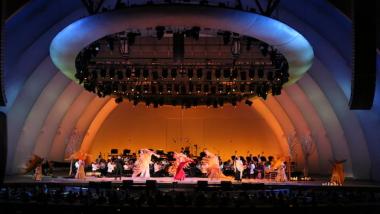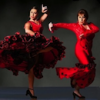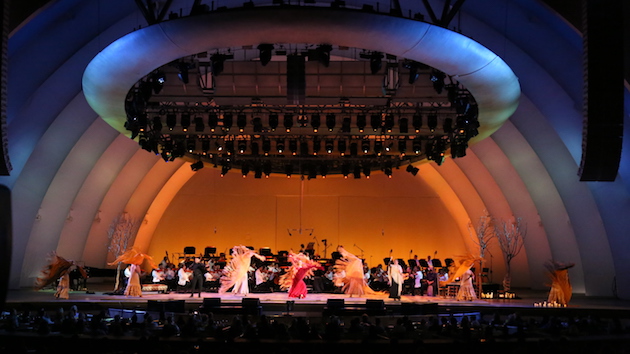
Might the young Chilean conductor, Paolo Bortolameolli, be the heir-apparent to Gustavo Dudamel at the Los Angeles Philharmonic? Recently elevated from assistant conductor to associate conductor, Bortolameolli has of late been featured prominently on the Phil’s calendar and his star (locally and internationally) is definitely on the rise.
At the close of the orchestra’s monumental centennial season, Bortolameolli proved himself a confident conductor of contemporary music, leading the LA Philharmonic’s New Music Group in the performances of Meredith Monk’s journey of discovery opera, Atlas, at Walt Disney Concert Hall. You may have seen him New Year’s Day when he appeared before a television audience of millions at the 2019 Rose Parade conducting members of the Philharmonic as they “floated” down Colorado Blvd.
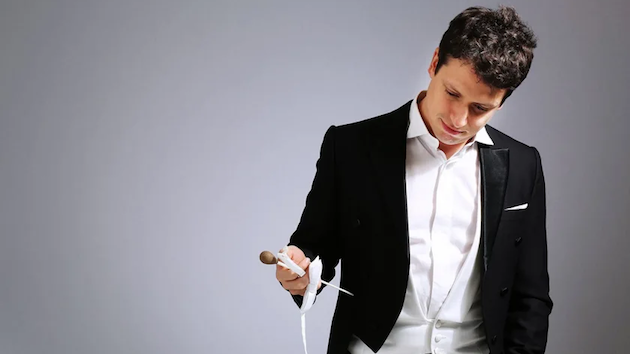
Thursday, a boyishly gregarious Bortolameolli led a program at the Hollywood Bowl that, as he pointed out, took him back to one of his earliest musical memories — when he would lie on the floor beneath his grandfather’s piano listening to him play music by Manuel de Falla, specifically his flamenco ballet, El amor brujo (Bewitched love).
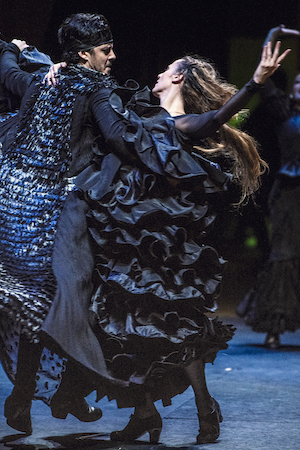
It was this work, accentuated by the brilliant dancing and contemporary choreography of Siudy Garrido and her company Siudy Flamenco Dance Theater, that climaxed Thursday’s concert. The first half was devoted to the Spanish flavors of Alborada del gracioso (Morning Song of a Jester) by Maurice Ravel, and selections from Falla’s ballet, El sombrero de tres picos (The Three-Cornered Hat), (1919) The two orchestral works proved an ideal setup for the full-scale dance dazzle that was to come.
By definition, the Hollywood Bowl is a casual venue, and Bortolameolli took full advantage of the wine-flowing picnic atmosphere to tell the audience about his childhood in Chile and his love for the music of Andalusia and the fiery emotionality of flamenco.
“I want to infuse you with this music,” he said. “On the count of three, I want you to all shout, OLÉ!” And we did.
Having just attended the opening night of the Bowl’s classical season on Tuesday (a far-less exciting concert conducted by Juanjo Mena), it was remarkable to hear how differently the orchestra responded to Bortolameolli. It was as if they were a different ensemble — brighter, crisper, more melodious, and clearly attuned to their associate conductor’s energy level.
In some ways this was a reprise performance. In 2015, Garrido and her Miami-based company performed Falla’s ballet at Walt Disney Concert Hall with Gustavo Dudamel conducting. The vast stage of the Bowl, however, offered Garrido the chance to display her solo virtuosity, the ensemble fluidity of her seven corps dancers, and the flair of the two tempestuous male soloists. In addition to the orchestra, they were accompanied by the flamenco-guitar artistry of José Luis de la Paz, and the percussion mastery of Diego Alvarez, who plays a hand-struck wooden-box instrument called a cajon.
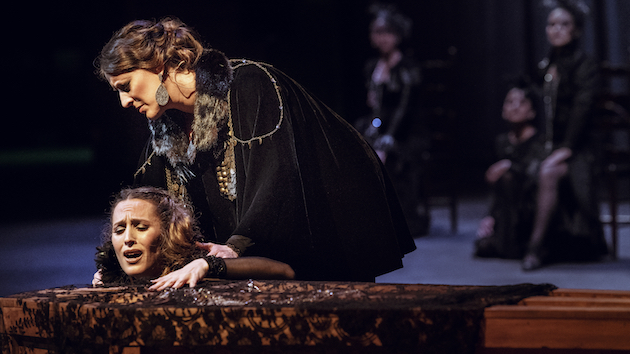
El amor brujo (1915) is based on an Andalusian legend about a woman whose husband dies leaving her grief-stricken. But when another man enters her life, her husband’s spirit returns a ghost, leaving the distraught woman torn between the living and the dead.
The cast featured Garrido in the central role of the widow, Candelas; George Akram as the Ghost; Manuel Gutierrez as the suitor, Carlmelo; featured dancer Claudia Gonzales as Lucia; with the renowned flamenco singer, Argentina López double cast as Candelas’s spirit. The stage direction was by Pablo Croce. Garrido also conceived the dramatically effective and visually stunning costumes.
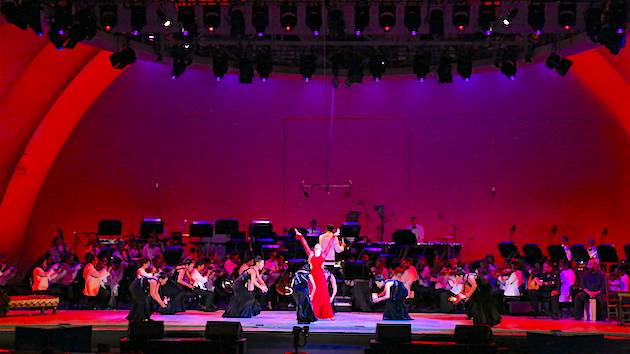
It all began with a funeral procession of grief worthy of Federico García Lorca. This scene, not part of Falla’s ballet provided a backstory as the widow and mourners processed onto the stage and toward the coffin accompanied by the guitar, the pounded rhythms of the cajon, and the keening voice of Argentina López. Then the full force of the orchestra led by Bortolameolli made its entrance.
As a choreographer, Garrido blends traditional aspects of flamenco — the rapid-fire footwork, the expressive curvature of the arms and extended fingers, with a sense of modern movement more akin to Martha Graham. As Garrido’s Candelas expressed the depth of her grief, her anguished movements were mirrored by the corps of women dancers like a Spanish version of a Greek chorus. The effect was traditional and contemporary and dramatically evocative.
Just as with the use of the cape in a bullring, the rhythmic swirl of a shawl or the pleats of a dress is a crucial element of flamenco. This aspect was used advantageously as part of Akram’s Ghost performance, as his cape flared, flowed, and attempted to envelop his lost love.
As Falla intended, the “Ritual Fire Dance” provided the performance with its most incendiary moment, with Garrido sheathed from head to toe in a fiery red gown. There was also a star-turn solo for Gutierrez as he proclaimed his affection with dramatic intensity, in a succession of arm thrusts and machine-gun footfalls.
There was also a tour de force moment in the “Midnight” scene when Candelas, in the throes of a nightmare, becomes caught in the voluminous folds of bedclothes that twist and wrap and bind her to the ghostly apparition of her lost love.
As conducted by Bortolameolli, danced and choreographed by Garrido, and performed by the members of her company, this was a performance that proved totally captivating. OLÉ indeed.

